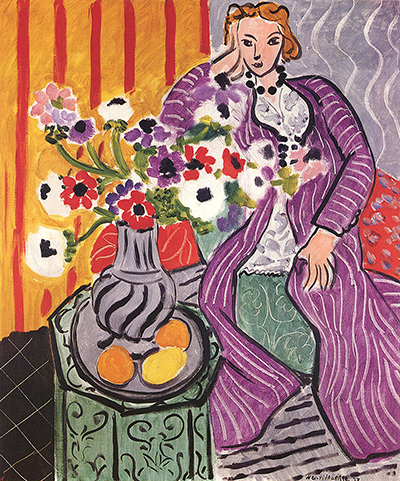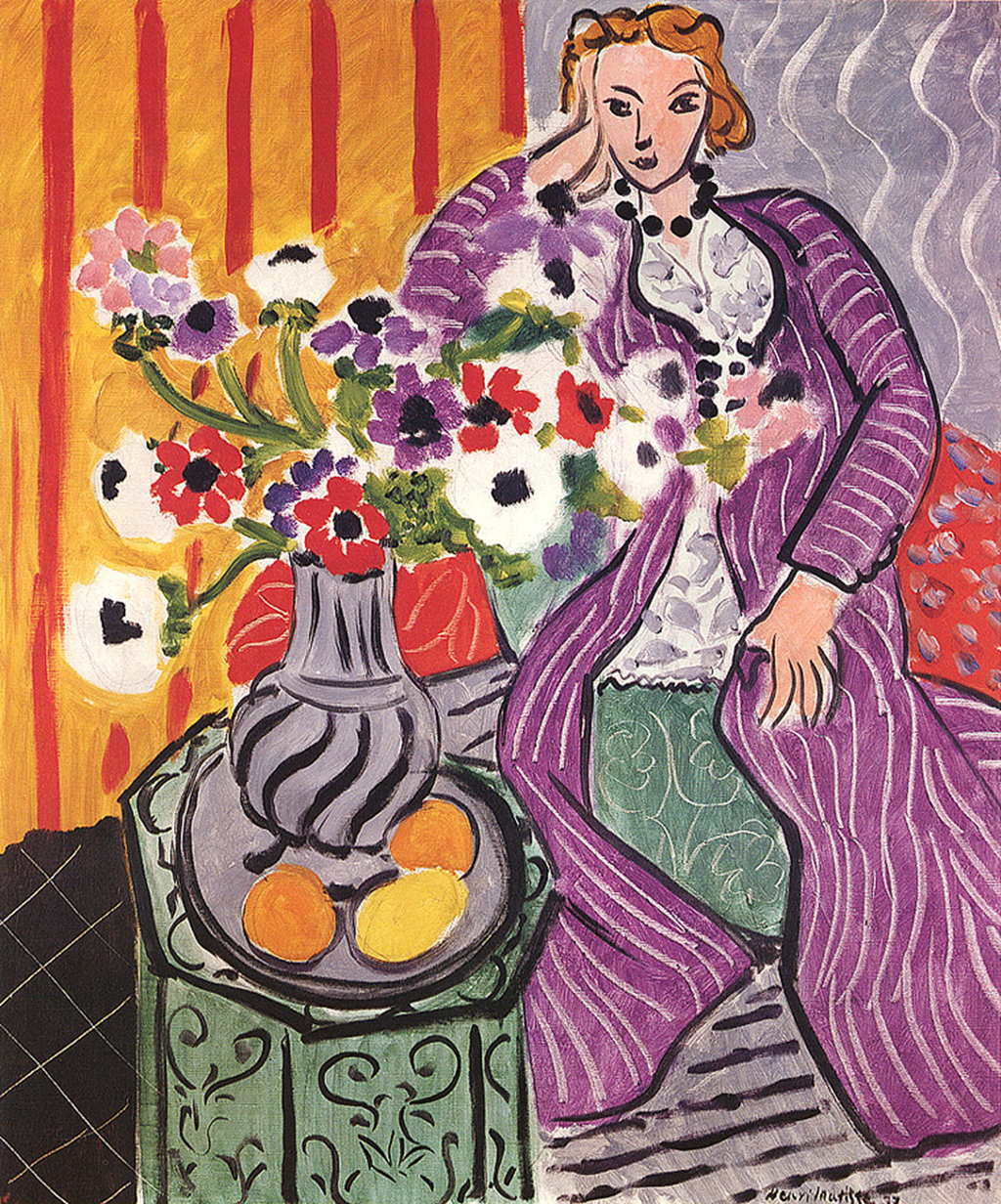The Purple Robe and Anemones painting by Henri Matisse is on display at the Baltimore Museum of Art. He used oil on canvas to create the artwork in 1937. The painting shows a model called Lydia Delectorskaya.
She wears a purple robe and sits beside a vase filled with anemones, hence the name of the image. Unlike other paintings, Matisse did not want to create a realistic portrayal of the model. Instead, he sought to use rhythm, colour, space, and lines to manipulate reality.
One of thestriking attributes of the painting is how well Henri is able to create harmony by the use of lines. He uses black serpentine lines for the vase and replicates the same when painting the robe of the mode. There are also white lines on the back wall that echo the harmony of the two subjects. Besides, the lines he creates on the table where the vase stands are in harmony with the lines on the model’s skirt. In essence, there are two types of lines on the image, each in harmony across different pieces.
The lines have created two effects on the painting. First, they have given objects like the vase a 3D feel without requiring the artist to vary light or different colours to show depth. While this feeling of depth is not very pronounced, it is quite bold and unique. Second, they have flattened the model without causing some variation in the harmony of the image. These lines are not blurred in any way, giving the image a static feel. Finally, there is a sense of calmness that comes with perfect harmony with a subtle attraction that makes the viewer want to look at the image for long.
In addition to lines, Matisse has expertly used vivid colour to bring out contrast and abstract. For example, there are bright bursts of colour exploding from the flowers, including purples, vibrant reds, and a splash of white petals. He has repeated this throughout the painting.
Here are examples. The reds in the flowers connect to the red lines on the wall and the red patterned couch, just behind the model. Besides, the purple on the mode’s robe connects with the purple flowers and the slightly teal colour used on the table and the model’s skirt. To enhance the intensity of these colours, the artist has placed complementary colours next to each other. For example, the model sits in front of a dotted red pouch while orange and yellow oranges are placed in front of a purple vase. This is one of his mostfamous impressionism works of art. It is synthetic but realistic. Interestingly, he does not use light in any way.





